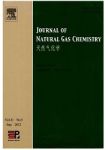Ti^(3+) self-doped TiO_2 photoelectrodes for photoelectrochemical water splitting and photoelectrocatalytic pollutant degradation
Ti^(3+) self-doped TiO_2 photoelectrodes for photoelectrochemical water splitting and photoelectrocatalytic pollutant degradation作者机构:College of Chemistry and Chemical EngineeringHunan University College of Chemistry and Materials ScienceLudong University State Key Laboratory of Crystal MaterialsShandong University
出 版 物:《Journal of Energy Chemistry》 (能源化学(英文版))
年 卷 期:2016年第25卷第4期
页 面:726-733页
核心收录:
学科分类:083002[工学-环境工程] 0830[工学-环境科学与工程(可授工学、理学、农学学位)] 07[理学] 08[工学] 09[农学] 0903[农学-农业资源与环境] 0713[理学-生态学]
基 金:supported by the Key Project of Natural Science Foundation of Shandong Province(ZR2013EMZ001) the National Basic Research Program of China(Grant No.2013CB632401) the National Nature Science Foundation of China(51,402,145) the National University Student Innovation Program(201,510,532,033)
主 题:Ti3+ self-doping Titanium Photoanode Water splitting Photoelectrocatalytic properties
摘 要:To improve the harvesting of visible light and reduce the recombination of photogenerated electrons and holes, Ti3+ self-doped TiO2 nanoparticles were synthesized and assembled into photoanodes with high visible light photoelectrochemical properties. X-ray diffraction, transmission electron microscopy, X-ray photoelectron spectra, electron resonance spectroscopy and energy dispersive X-ray spectra were used to characterize the structure, crystallinity, morphology and other properties of the obtained nanoparticles. UV-visible diffuse reflectance spectra showed that the Ti3+ self-doped TiO2 nanoparticles had a strong absorption between 400 and 800 nm. Moreover, when hydrothermal treatment time was prolonged to 22 h, the heterogeneous junction was formed between the anatase and rutile TiO2, where the anatase particles exposed highly active {001} facets. Under visible light irradiation, the Ti3+ self-doped TiO2 electrode exhibited an excellent photoelectrocatalytic degradation of rhodamine B (RhB) and water splitting performance. Intriguingly, by selecting an appropriate hydrothermal time, the high photoconversion efficiency of 1.16% was achieved. (C) 2016 Science Press and Dalian Institute of Chemical Physics, Chinese Academy of Sciences. Published by Elsevier B.V. and Science Press. All rights reserved.




